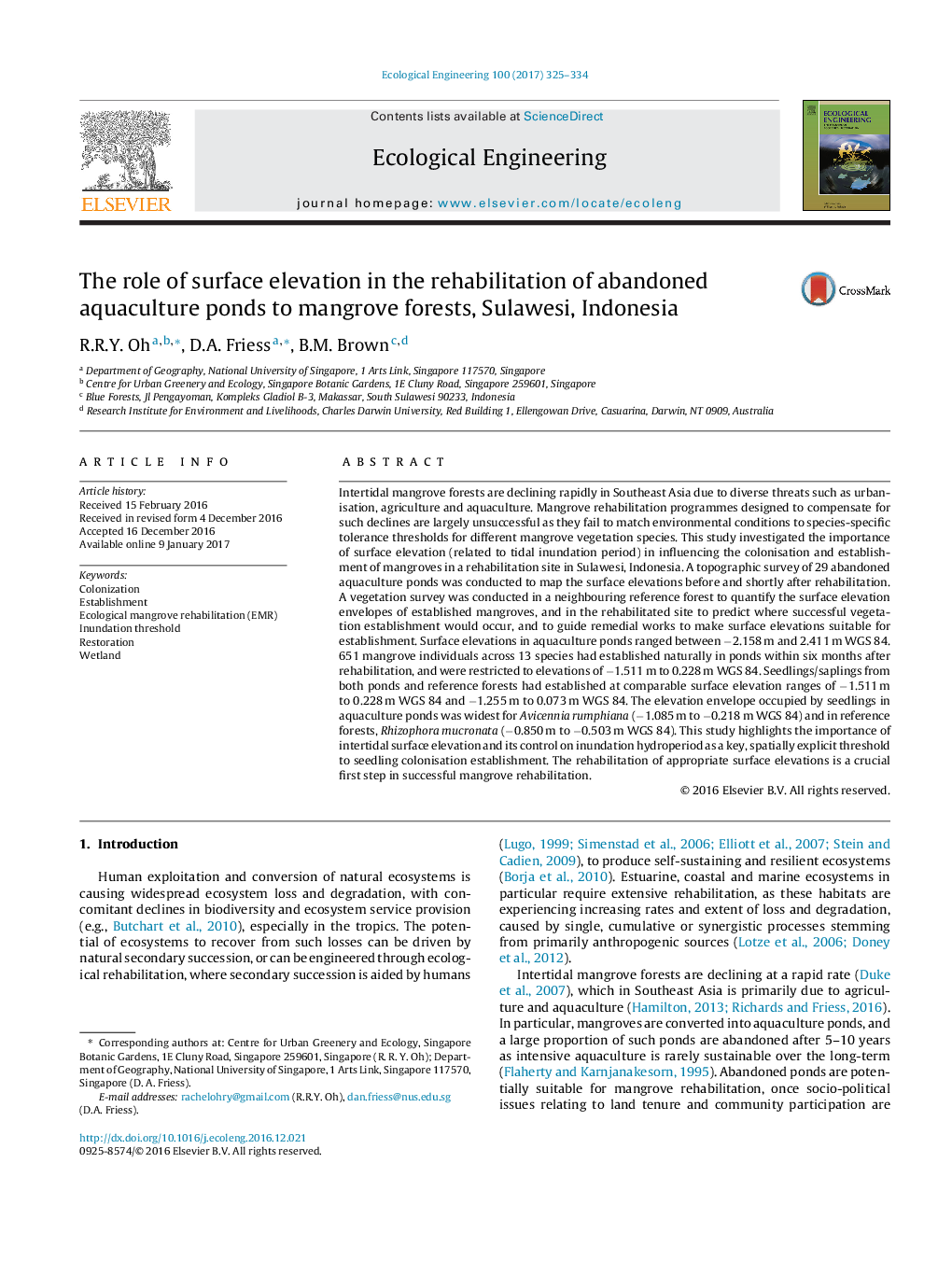| کد مقاله | کد نشریه | سال انتشار | مقاله انگلیسی | نسخه تمام متن |
|---|---|---|---|---|
| 5743735 | 1617999 | 2017 | 10 صفحه PDF | دانلود رایگان |
- Surface elevation is a key control on mangrove seedling distribution.
- Seedlings established at an elevation range of â1.255Â m to 0.228Â m WGS 84.
- Increasing surface elevation in ponds will facilitate seedling establishment.
- Mapping site surface elevation can optimise rehabilitation design and success.
Intertidal mangrove forests are declining rapidly in Southeast Asia due to diverse threats such as urbanisation, agriculture and aquaculture. Mangrove rehabilitation programmes designed to compensate for such declines are largely unsuccessful as they fail to match environmental conditions to species-specific tolerance thresholds for different mangrove vegetation species. This study investigated the importance of surface elevation (related to tidal inundation period) in influencing the colonisation and establishment of mangroves in a rehabilitation site in Sulawesi, Indonesia. A topographic survey of 29 abandoned aquaculture ponds was conducted to map the surface elevations before and shortly after rehabilitation. A vegetation survey was conducted in a neighbouring reference forest to quantify the surface elevation envelopes of established mangroves, and in the rehabilitated site to predict where successful vegetation establishment would occur, and to guide remedial works to make surface elevations suitable for establishment. Surface elevations in aquaculture ponds ranged between â2.158Â m and 2.411Â m WGS 84. 651 mangrove individuals across 13 species had established naturally in ponds within six months after rehabilitation, and were restricted to elevations of â1.511Â m to 0.228Â m WGS 84. Seedlings/saplings from both ponds and reference forests had established at comparable surface elevation ranges of â1.511Â m to 0.228Â m WGS 84 and â1.255Â m to 0.073Â m WGS 84. The elevation envelope occupied by seedlings in aquaculture ponds was widest for Avicennia rumphiana (â1.085Â m to â0.218Â m WGS 84) and in reference forests, Rhizophora mucronata (â0.850Â m to â0.503Â m WGS 84). This study highlights the importance of intertidal surface elevation and its control on inundation hydroperiod as a key, spatially explicit threshold to seedling colonisation establishment. The rehabilitation of appropriate surface elevations is a crucial first step in successful mangrove rehabilitation.
Journal: Ecological Engineering - Volume 100, March 2017, Pages 325-334
